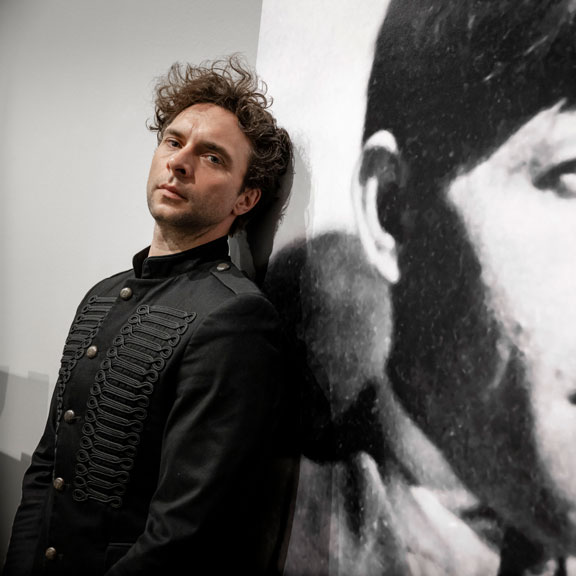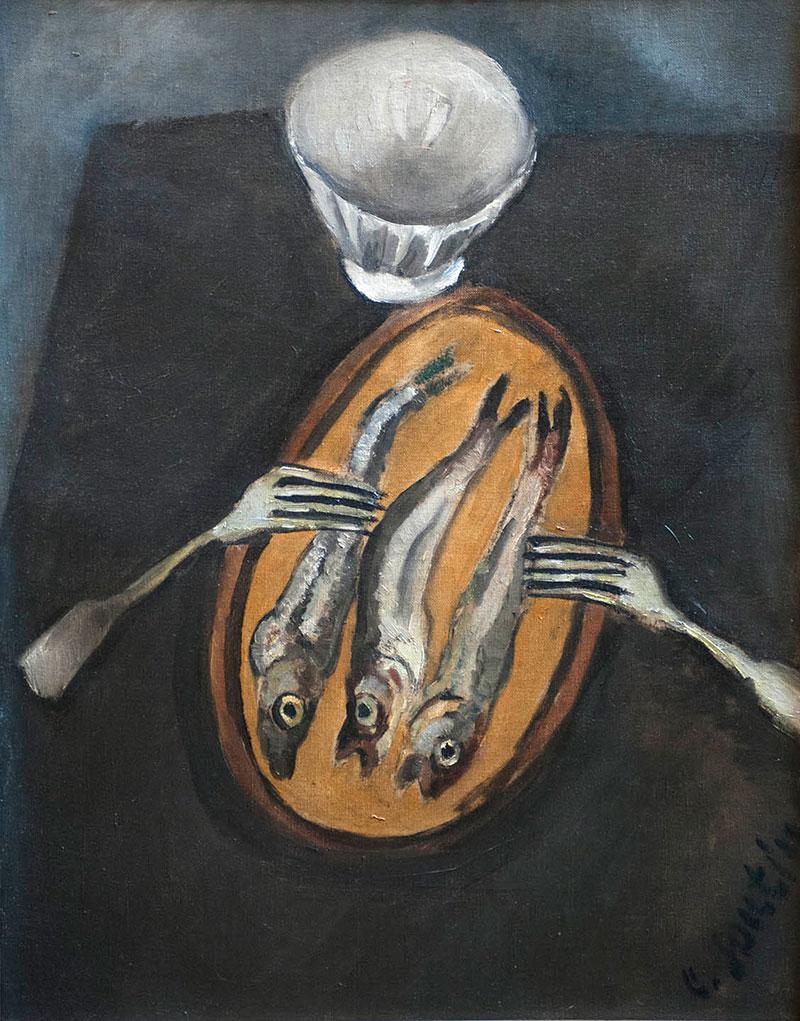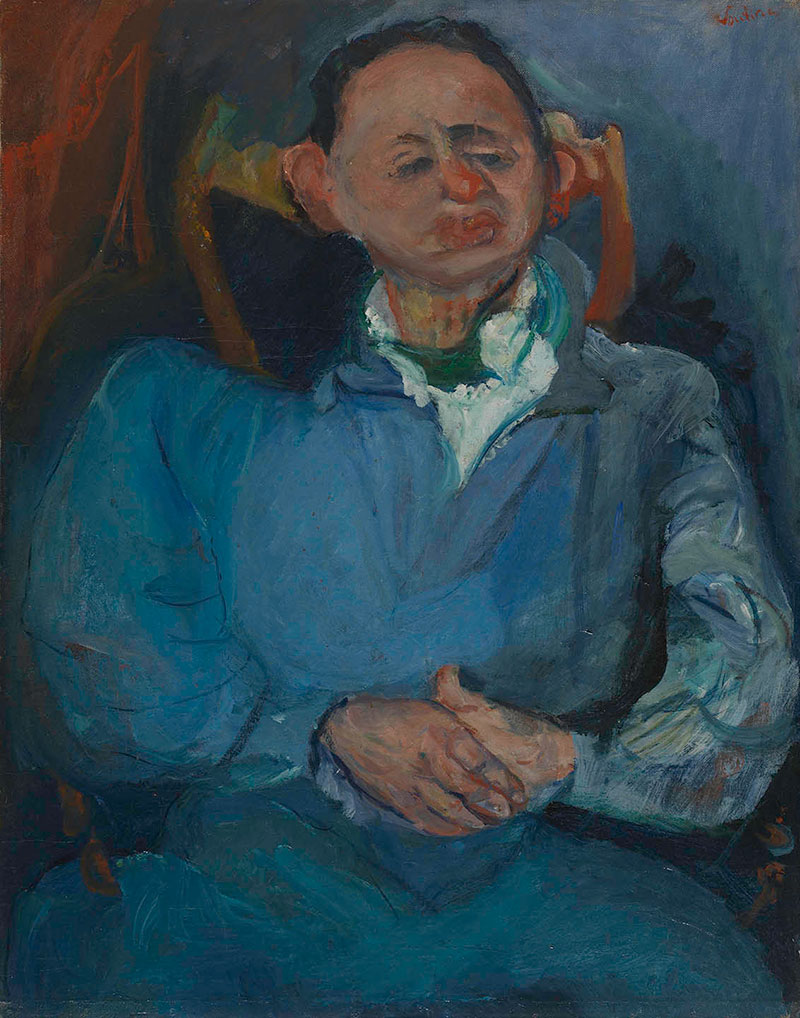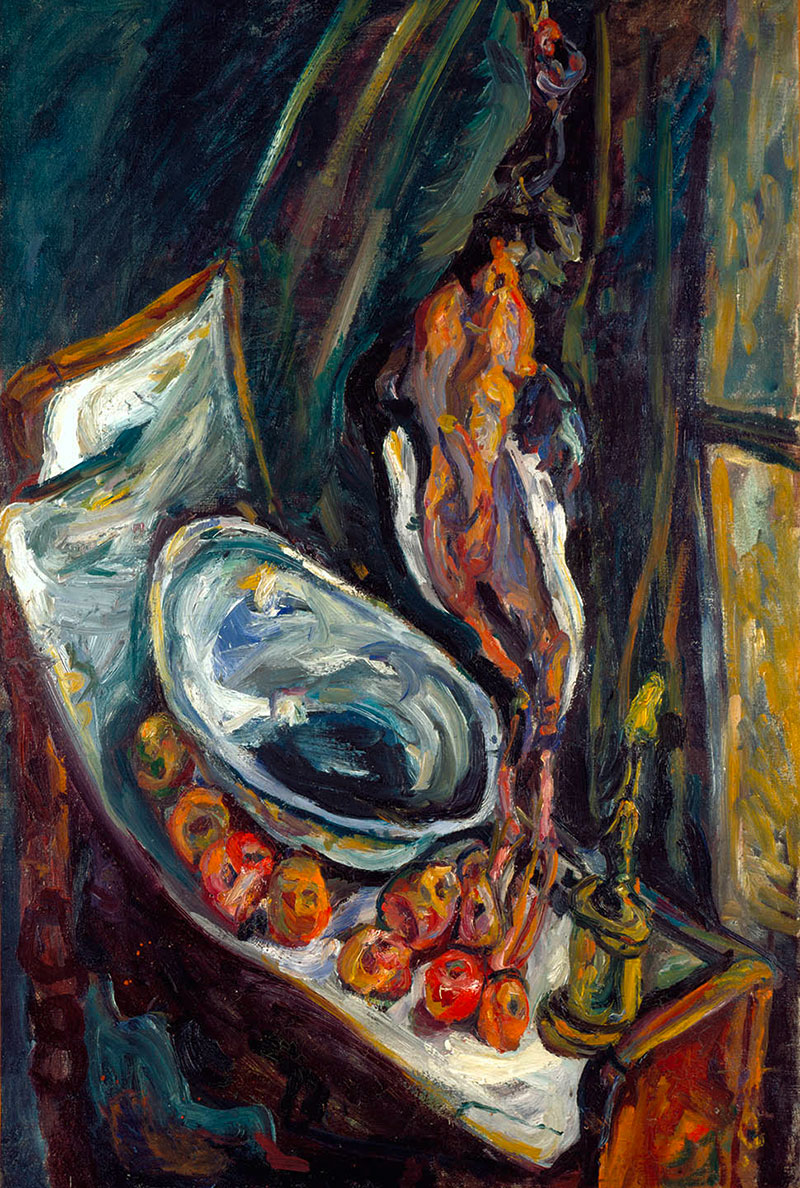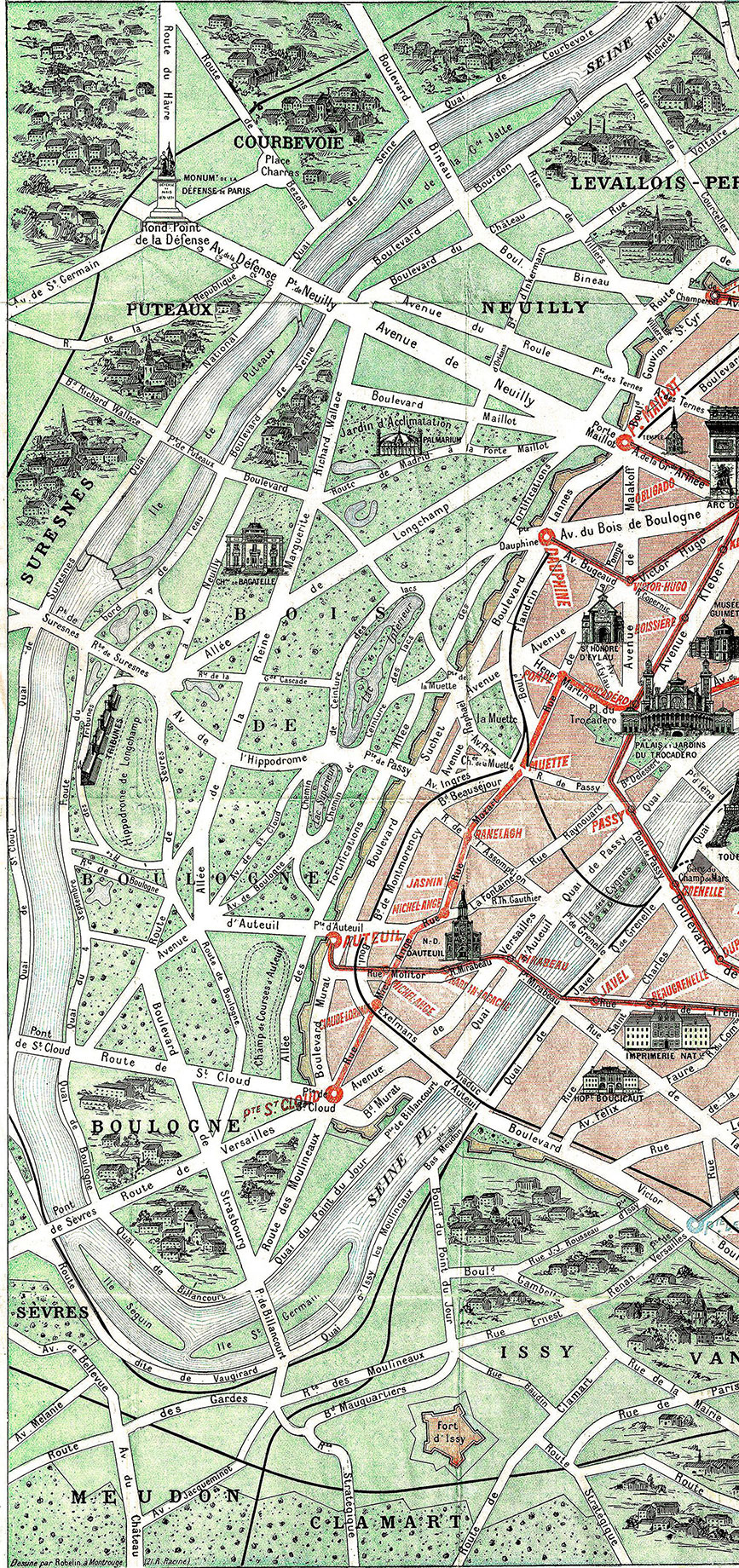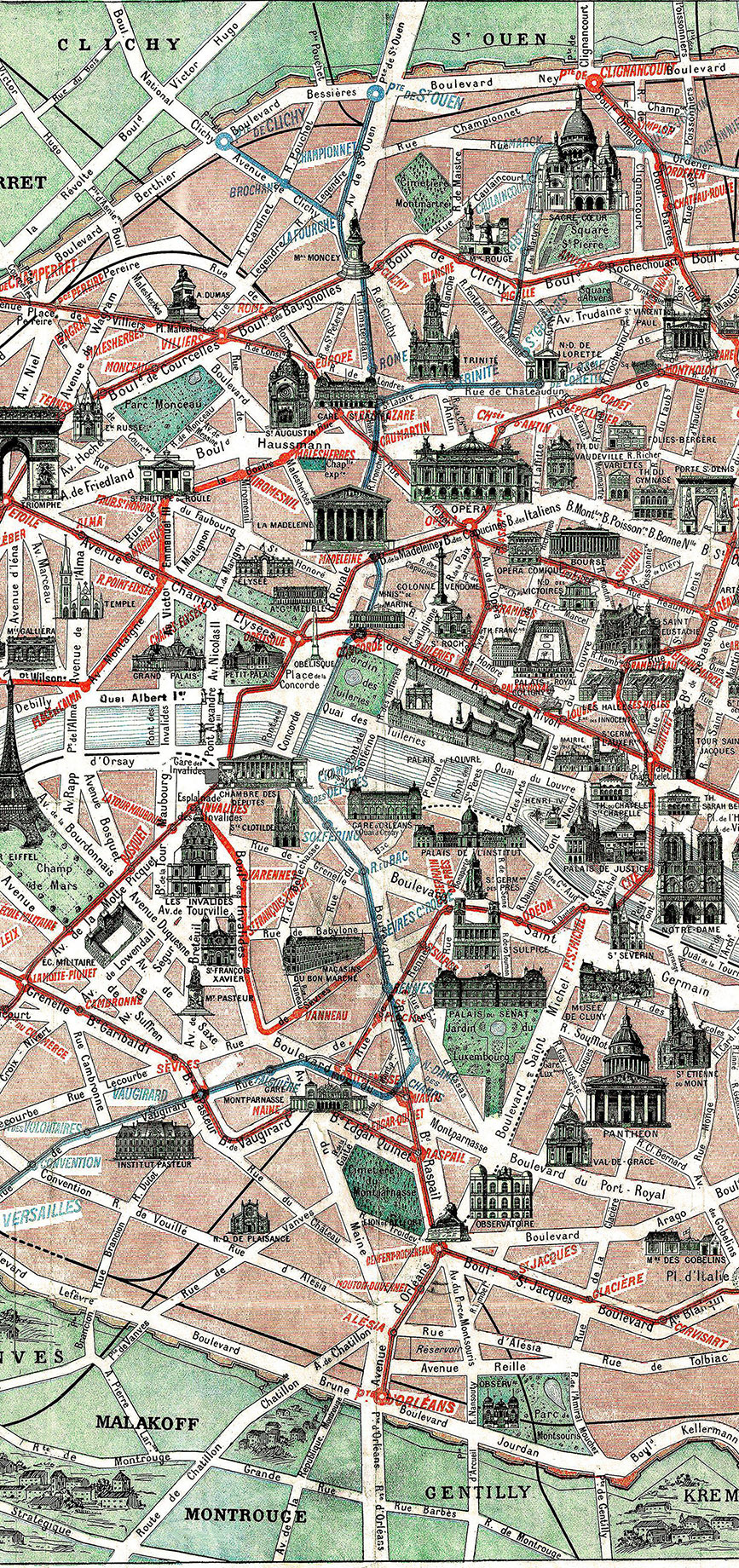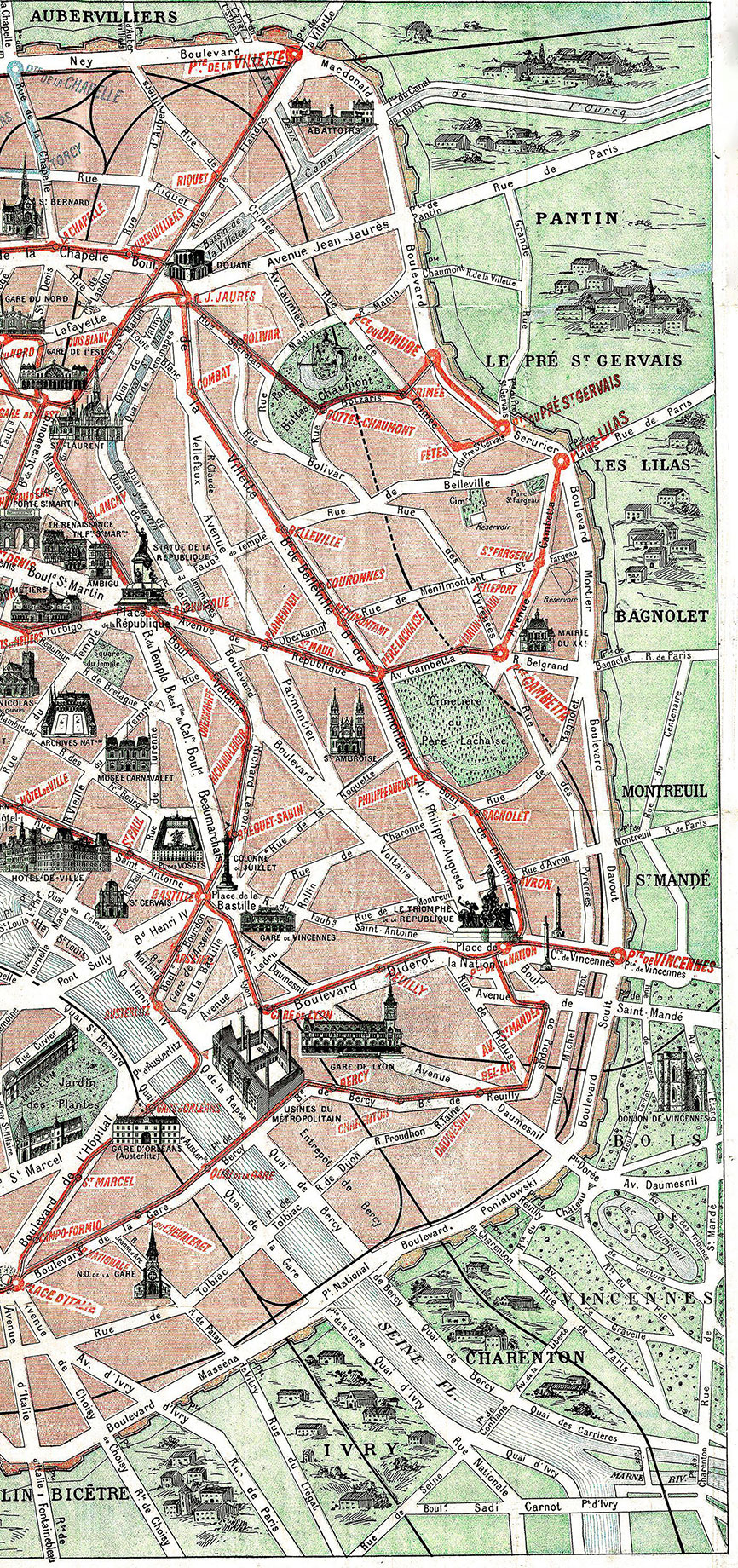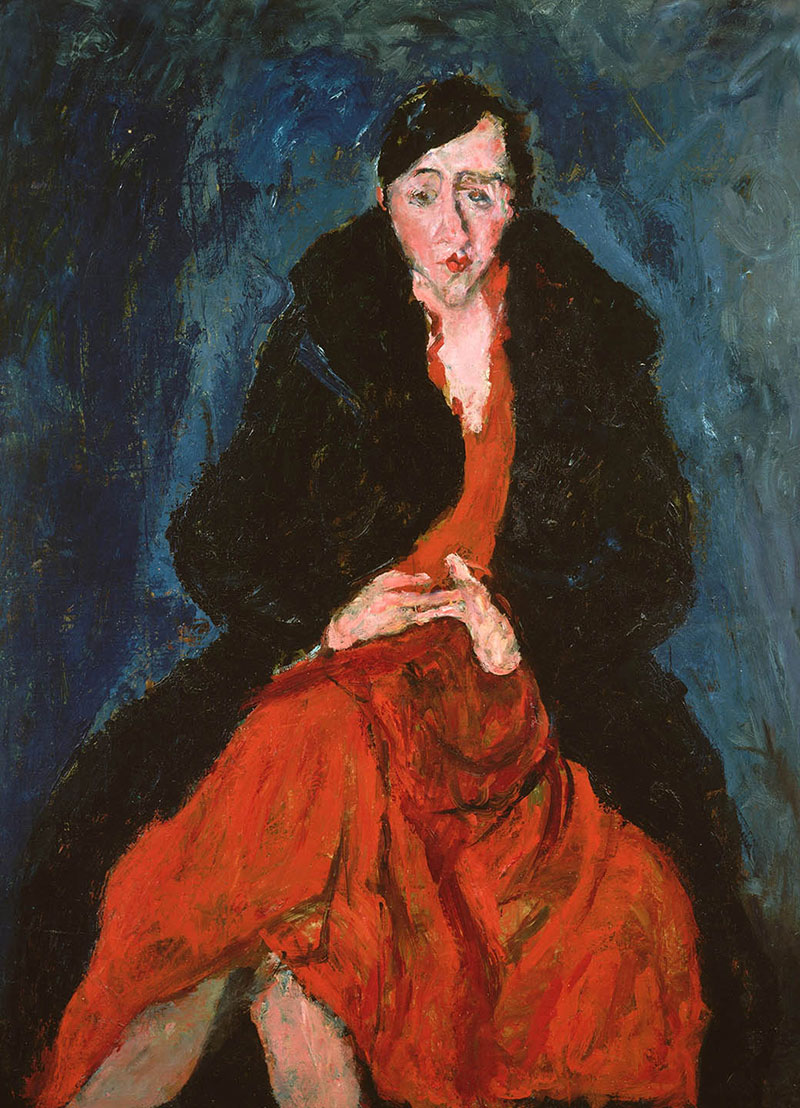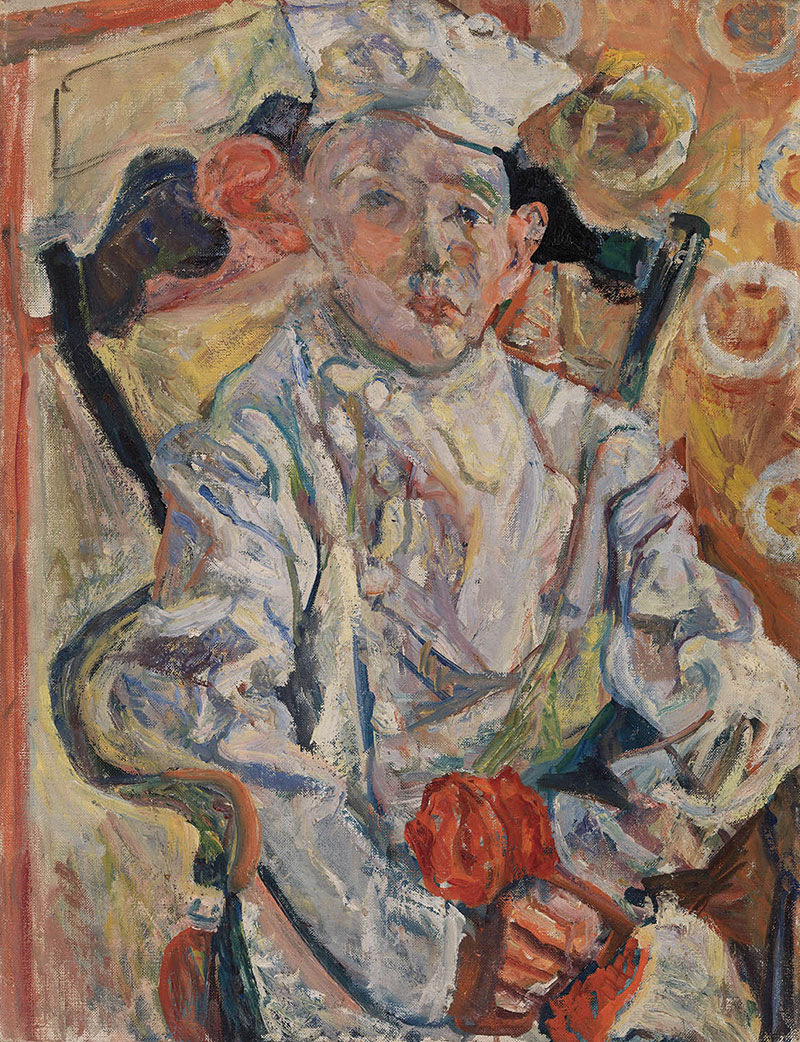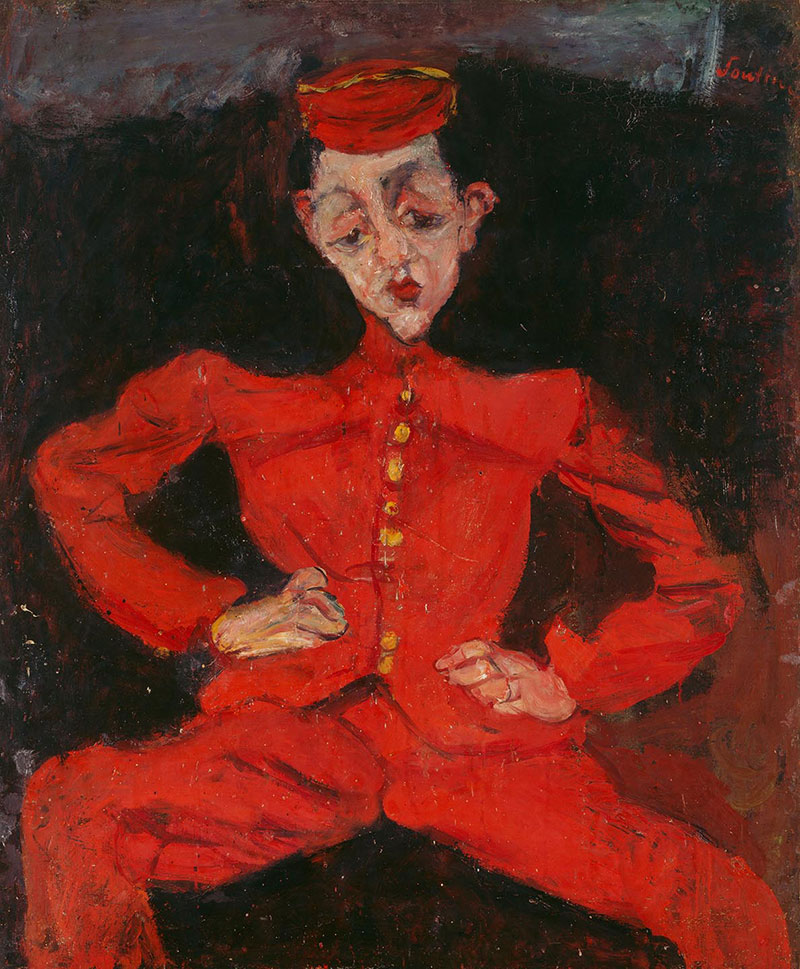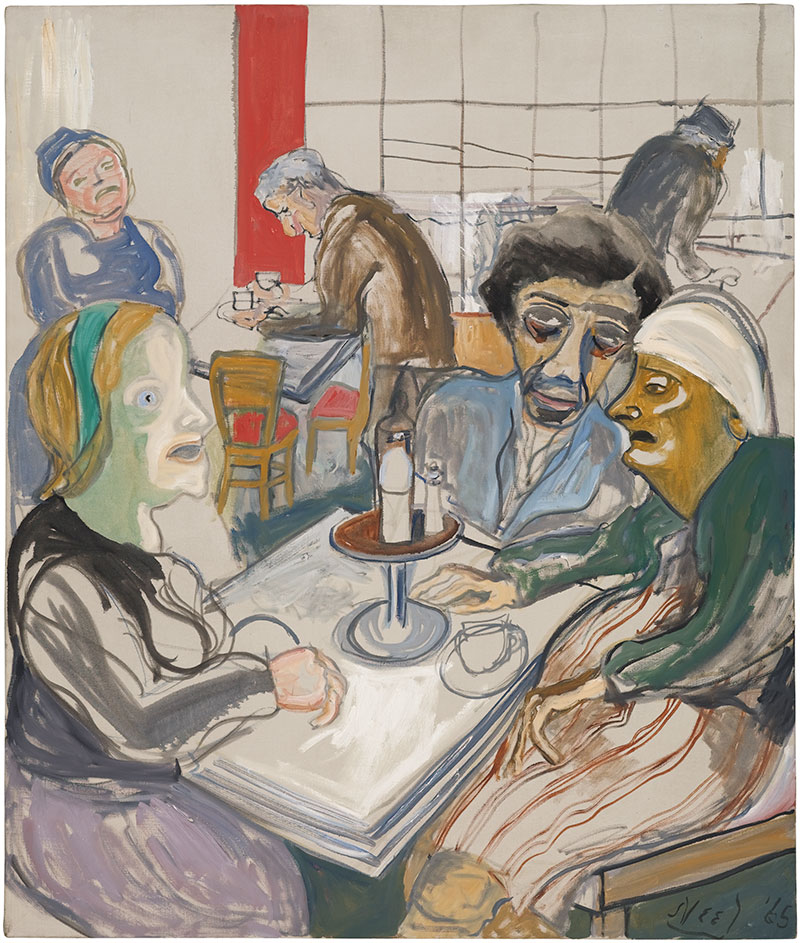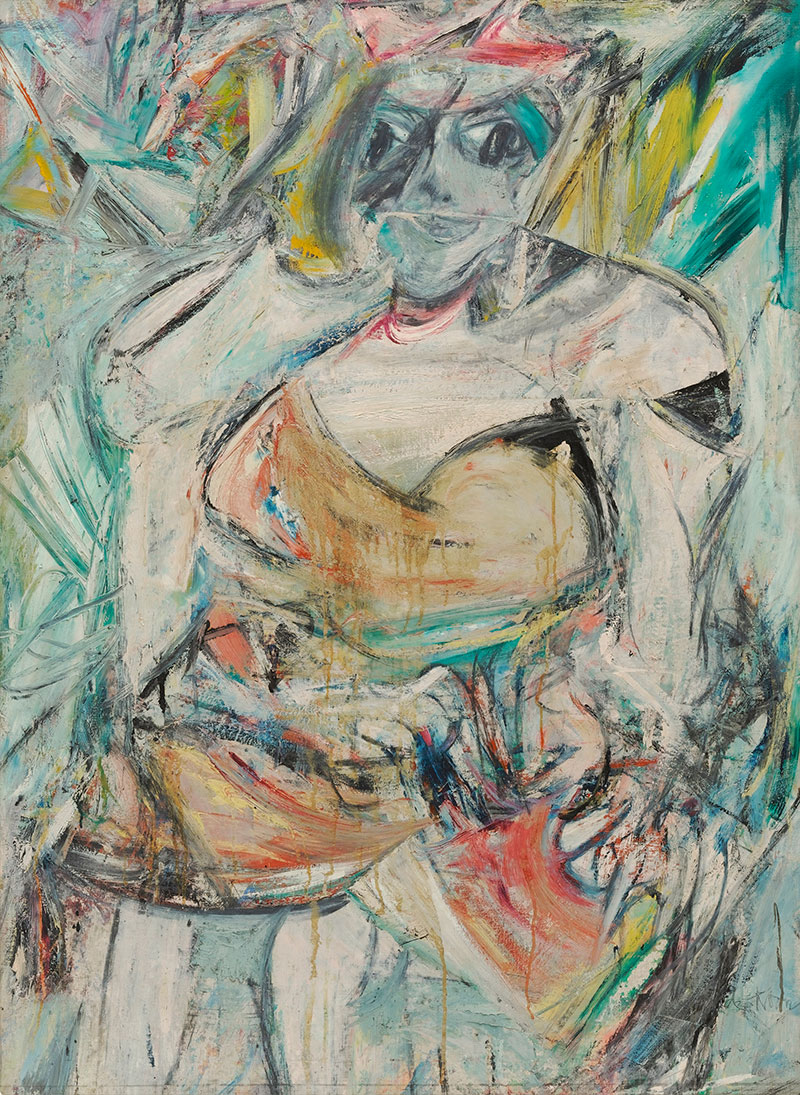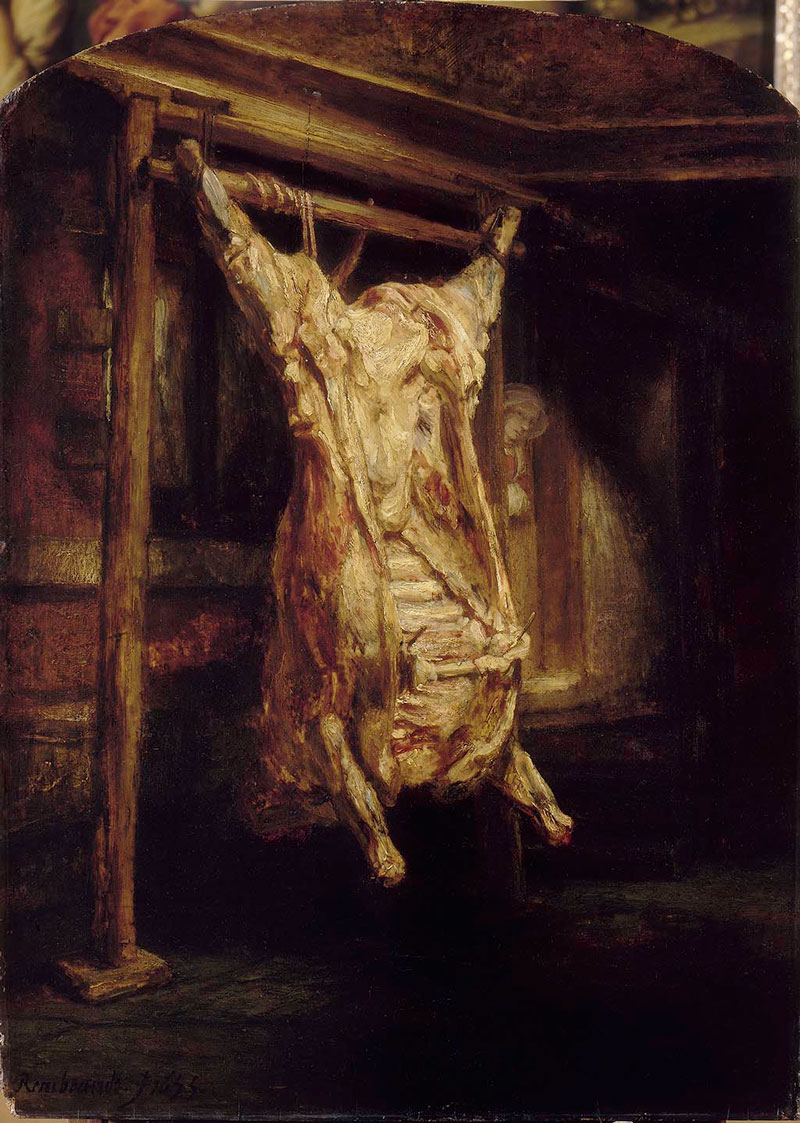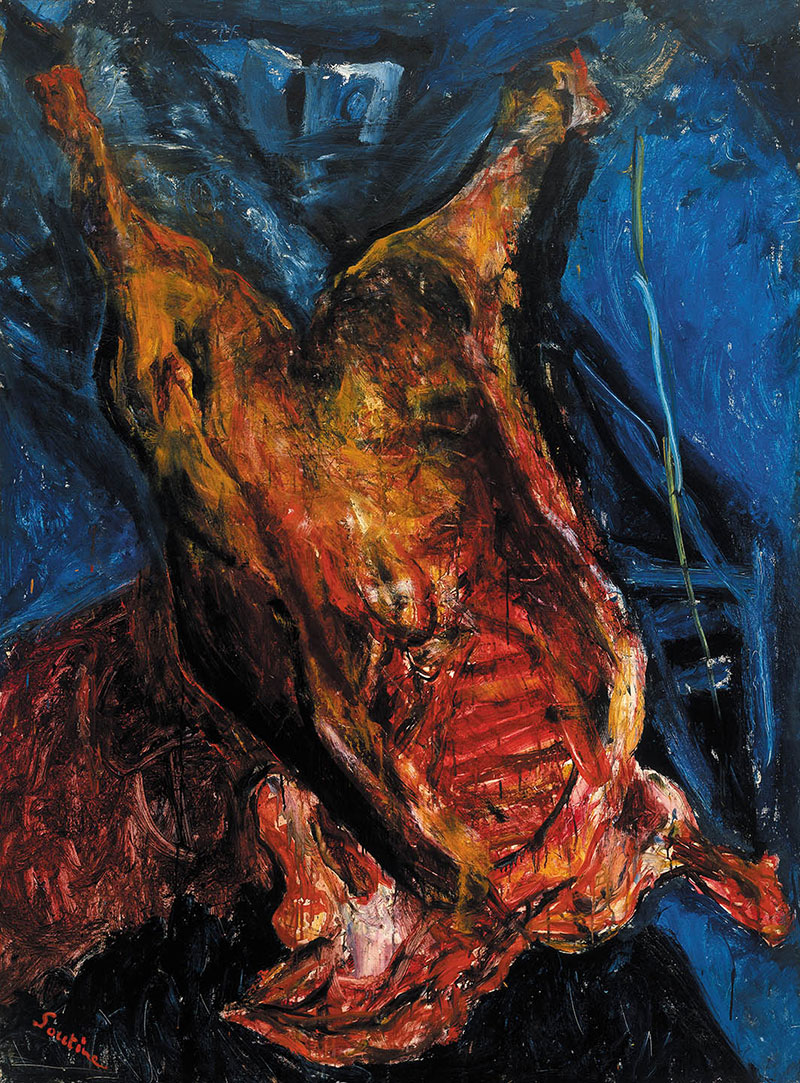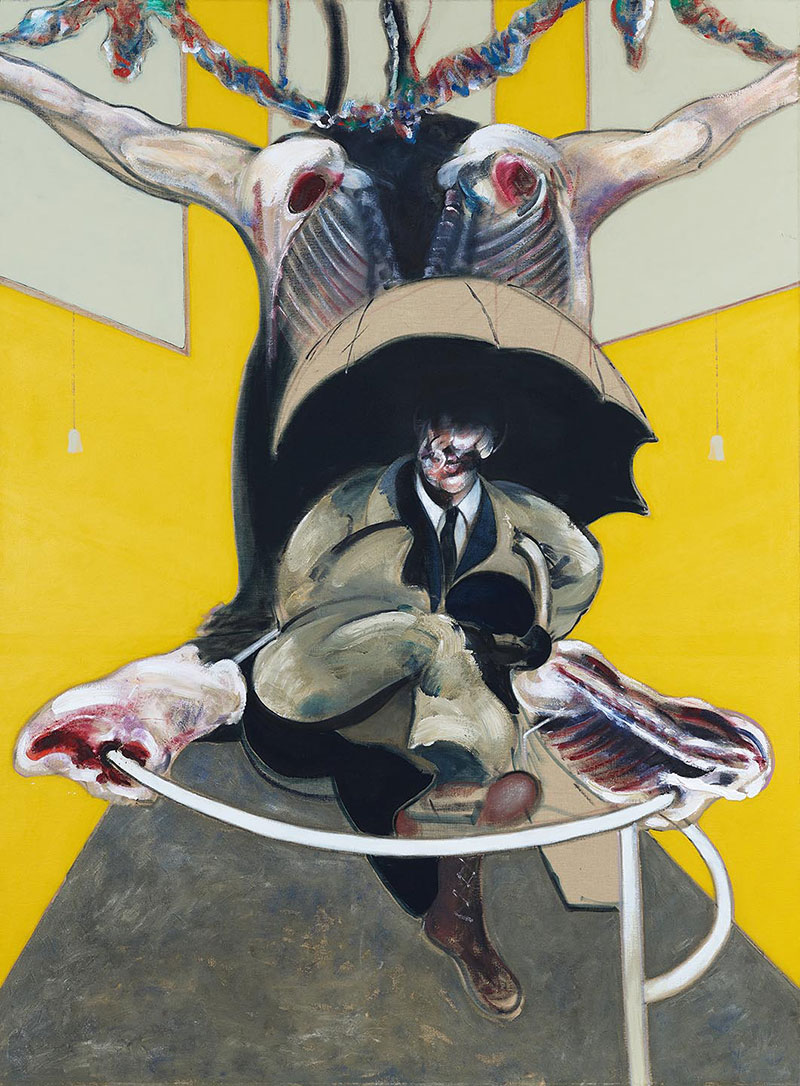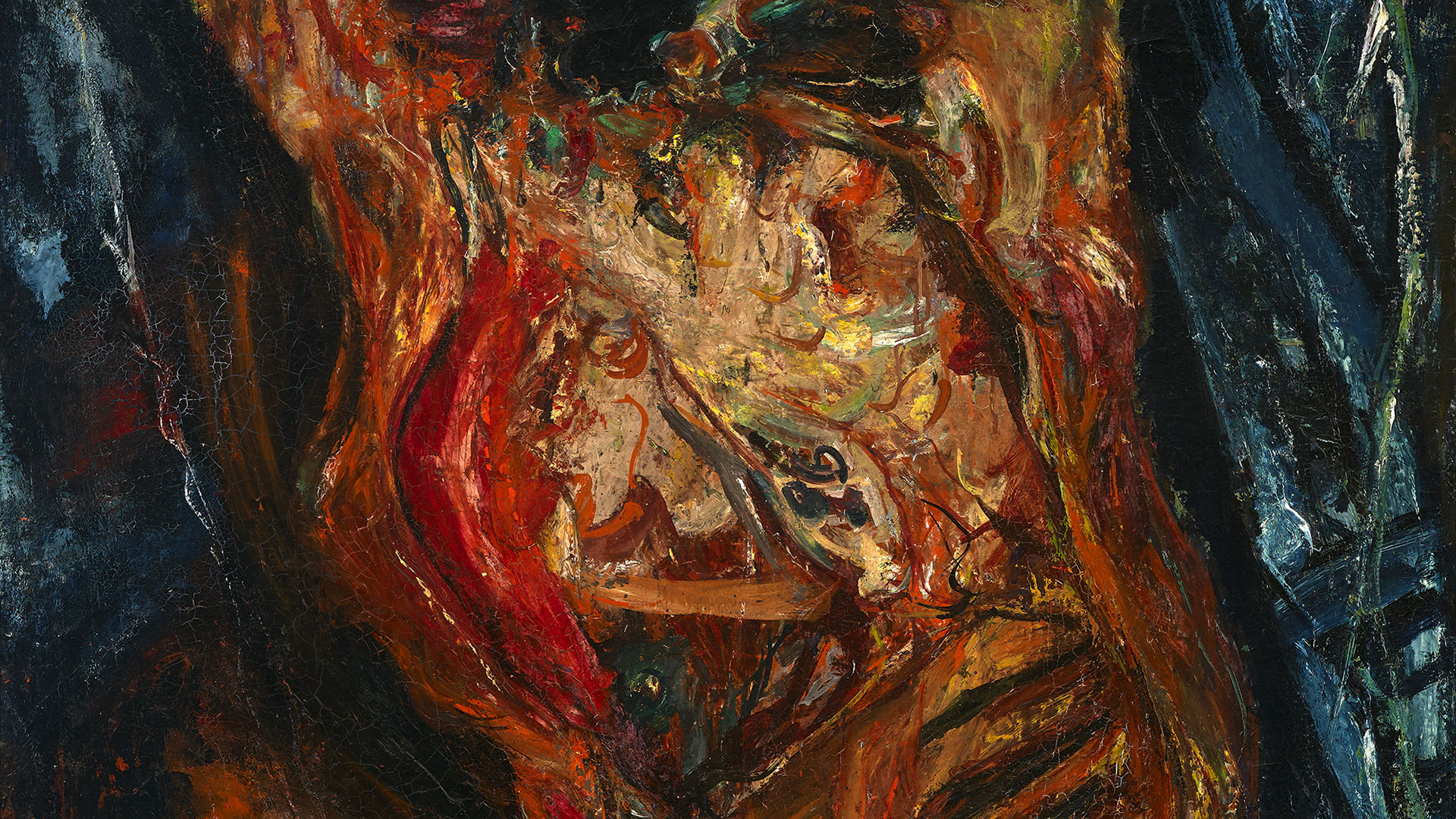
Sept. 2, 2023 -
Jan. 14, 2024
Soutine
Visit the exhibition at K20 in Düsseldorf until January 14, 2024.
While there, use the audio guide narrated by André Kaczmarczyk, available exclusively on site.
A Painter and a Legend
Chaïm Soutine (1893–1943) is one of the great painters of classical modernism. His paintings show landscapes, objects, and people in his immediate surroundings. An expressive quality can be found in his works with their distorted forms, exaggerations, dynamic contours, vigorous brushstrokes, and challenging color contrasts.
The surfaces of his paintings consist of dense weavings of colors. They are the result of a painting culture that referred to the most famous works of art history as models, employed a passionate painting process to generate the contours of the depicted objects and people, and created different surface areas by putting bold brushstrokes next to and on top of each other.
The particularly sensuous quality of his paintings makes Soutine one of the most celebrated representatives of an expressive painting style. He was a role model for painters and is admired to this day.

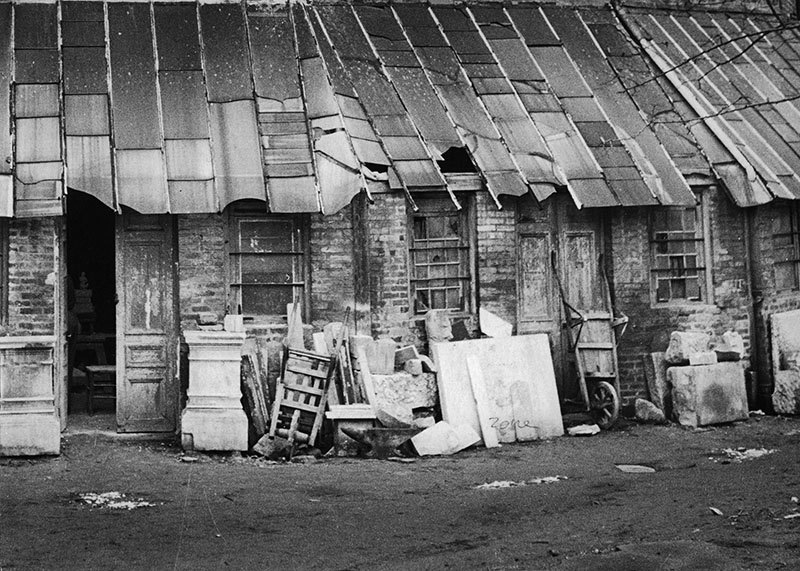
Soutine was a young painter from a poor background. In 1913, he went to Paris in the hopes of developing as an artist and of gaining economic success. He would go on to achieve both.
After growing up in a small town near Minsk in what is now Belarus, he studied in Minsk and Vilnius before he decided to move to Paris. The train journey there was two thousand kilometers long and took several days, which he spent in fourth class. He stayed with a friend who he had studied with, the painter Pinchus Krémègne, and lived with him in La Ruche (The Beehive) for a while, an artist colony with about 100 bare studios located near the slaughterhouses. The colony attracted many immigrants in precarious financial situations. It was here that Soutine met a community of international artists: Amedeo Modigliani, Marc Chagall, Jacques Lipchitz, Ossip Zadkine, and Fernand Léger all lived in La Ruche for a while.
Companions
Marc Chagall
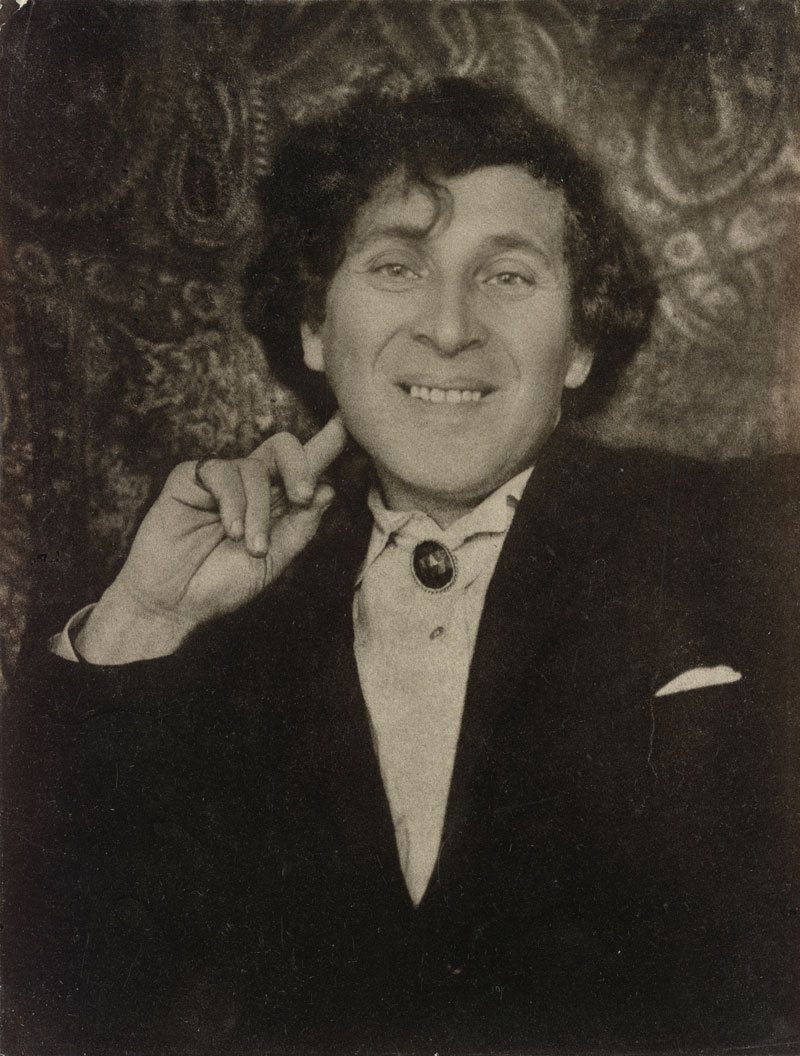
Marc Chagall, 1925
Köln, Museum Ludwig
bpk / Rheinisches Bildarchiv Köln / Erfurth, Hugo
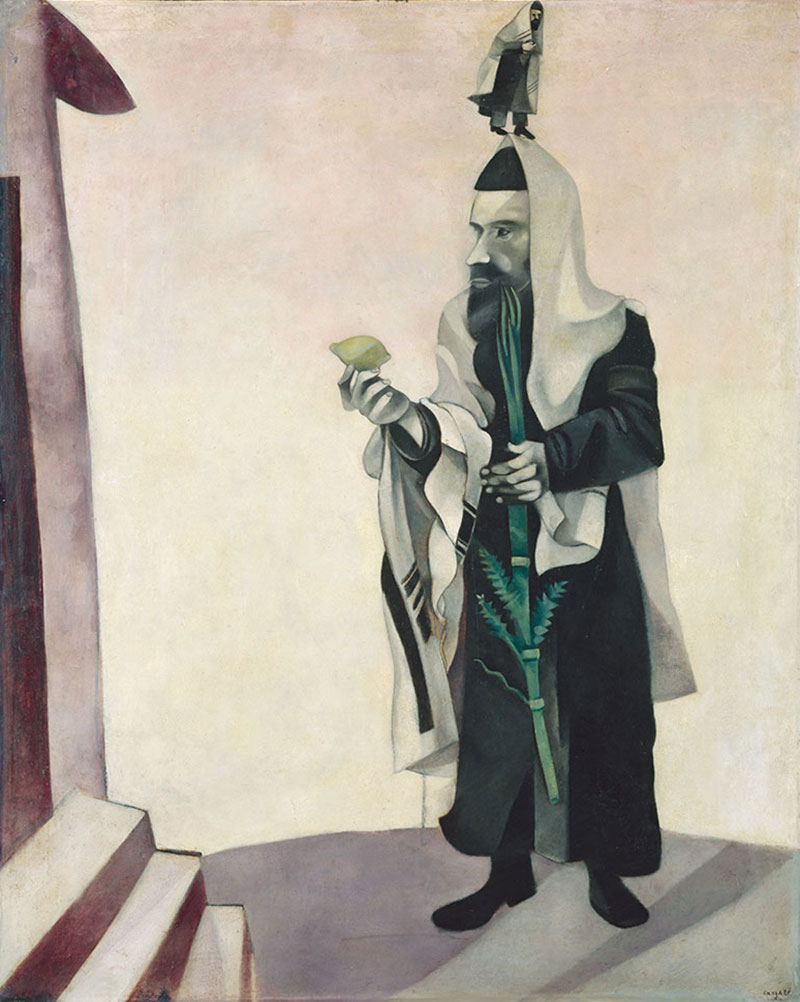
Feast Day, 1914
Oil on canvas
123,7 × 104,7 cm
Kunstsammlung Nordrhein-Westfalen, Düsseldorf
Photo: Walter Klein, Düsseldorf
Amedeo Modigliani
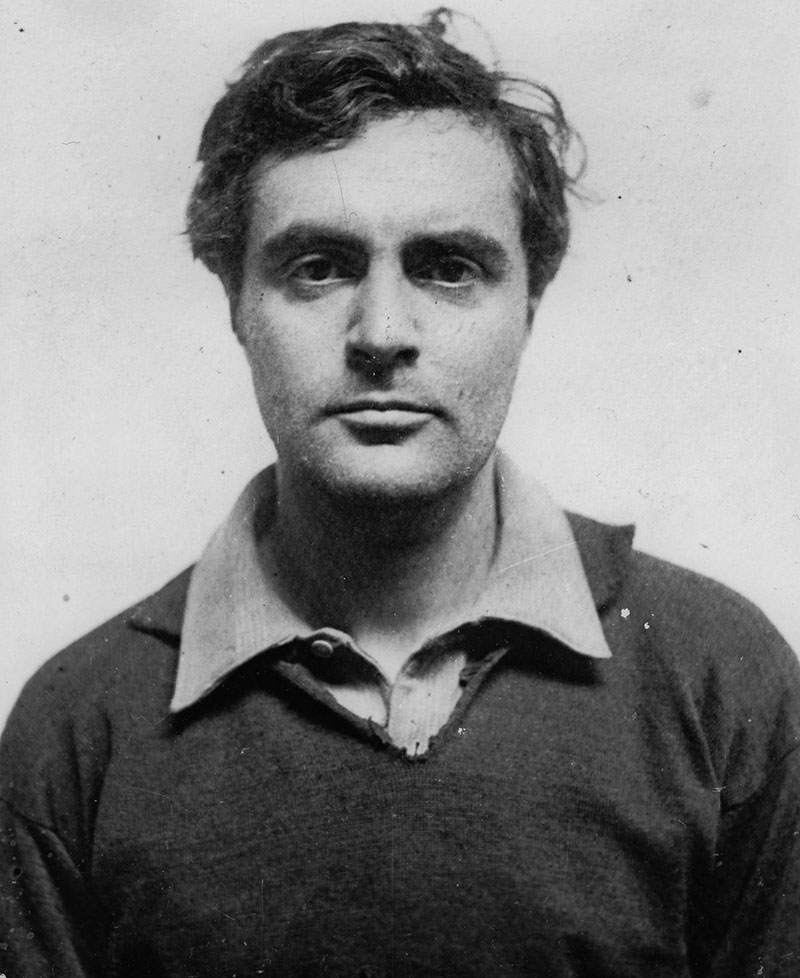
Musée d’art et d’histoire du Judaïsme, Paris
Photo: Marc Vaux
© mahJ
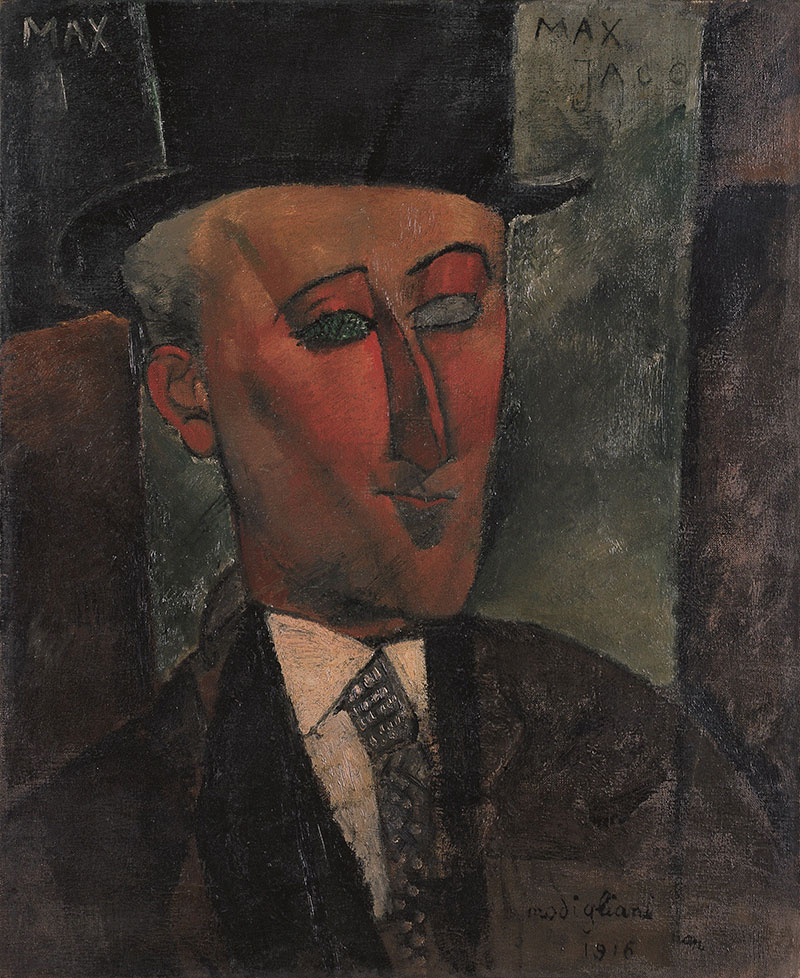
Portrait of Max Jacob, 1916
Oil on canvas
95.5 × 83.4 cm
Kunstsammlung Nordrhein-Westfalen, Düsseldorf
Photo: Walter Klein, Düsseldorf
Juan Gris
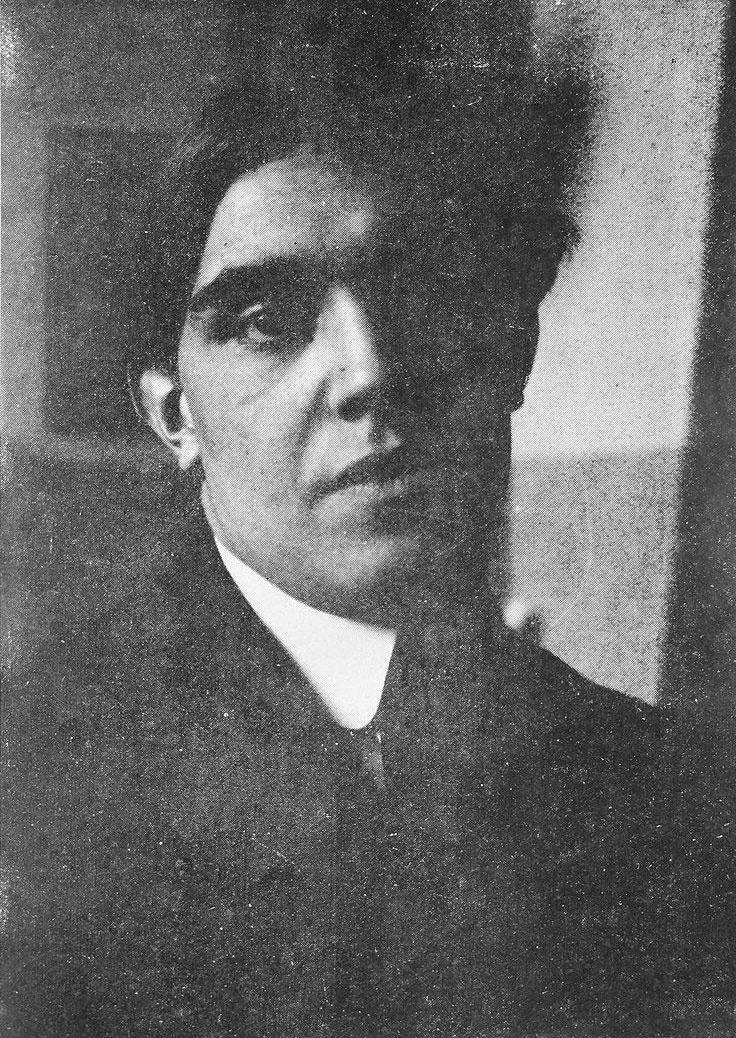
in : Guillaume Apollinaire, Les Peintres Cubistes, Méditations Esthétiques, Eugène Figuière et Cie, Éditeurs, 1913,
online: https://de.wikipedia.org/wiki/Juan_Gris#/media/Datei:Juan_Gris,_portrait_photograph,_published_in_Les_Peintres_Cubistes,_1913.jpg
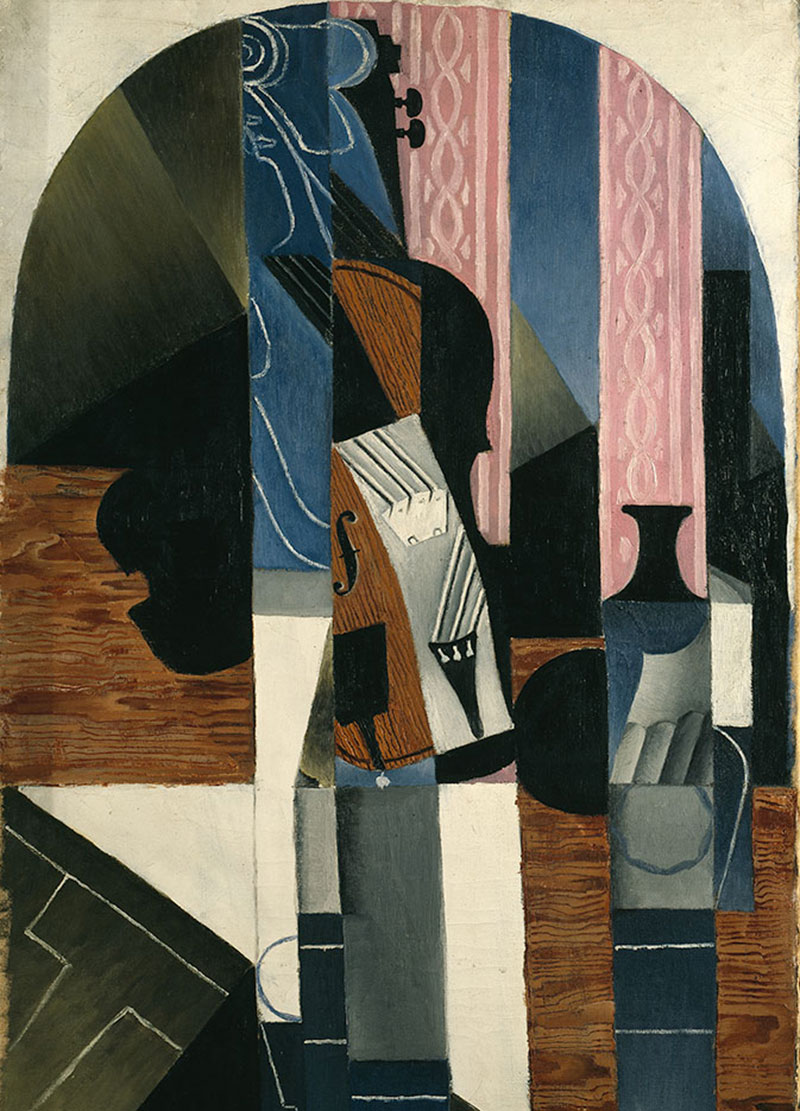
Still Life (Violin and Inkwell)
Oil on canvas
104,5 × 75,5 cm
Kunstsammlung Nordrhein-Westfalen, Düsseldorf
Photo: Walter Klein, Düsseldorf
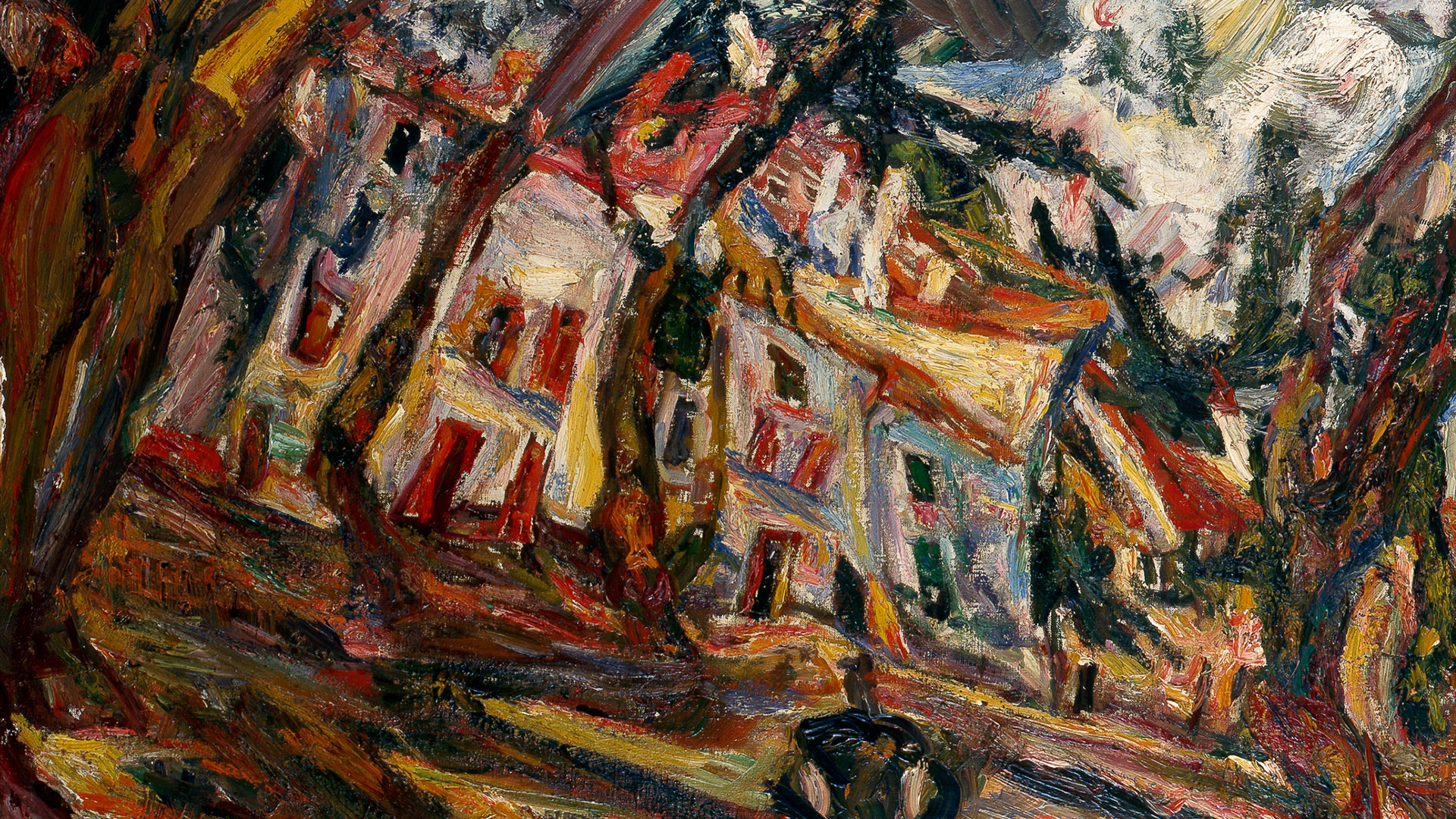
The notion of the poor artist and intellectual prevailed both during and after the war. During this time, Soutine painted a great deal, while also hoping for success. In 1916, his friend Amedeo Modigliani convinced his gallerist Léopold Zborowski to represent Soutine as well. The art dealer gave him a small regular allowance and enabled him to stay and paint in Céret and Cagnes-sur-Mer. The work Le Pâtissier (The Pastry Maker), which was painted in Céret in 1919, would become a central work in Soutine’s career.
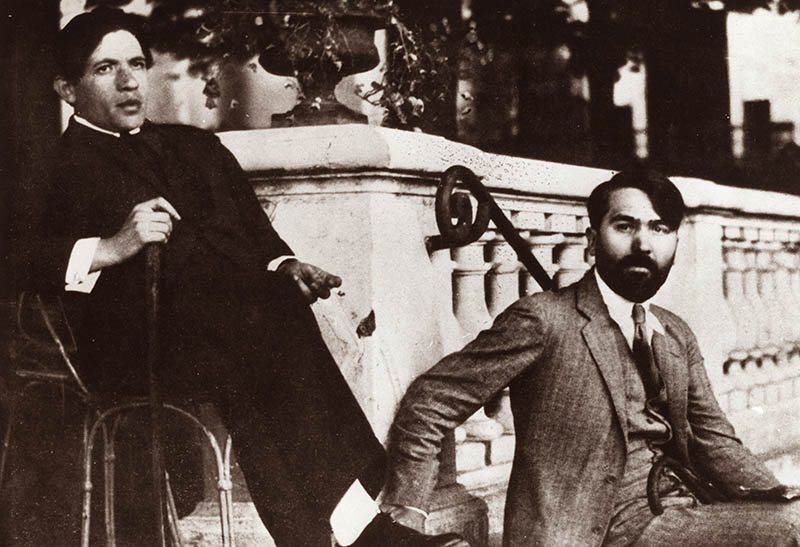
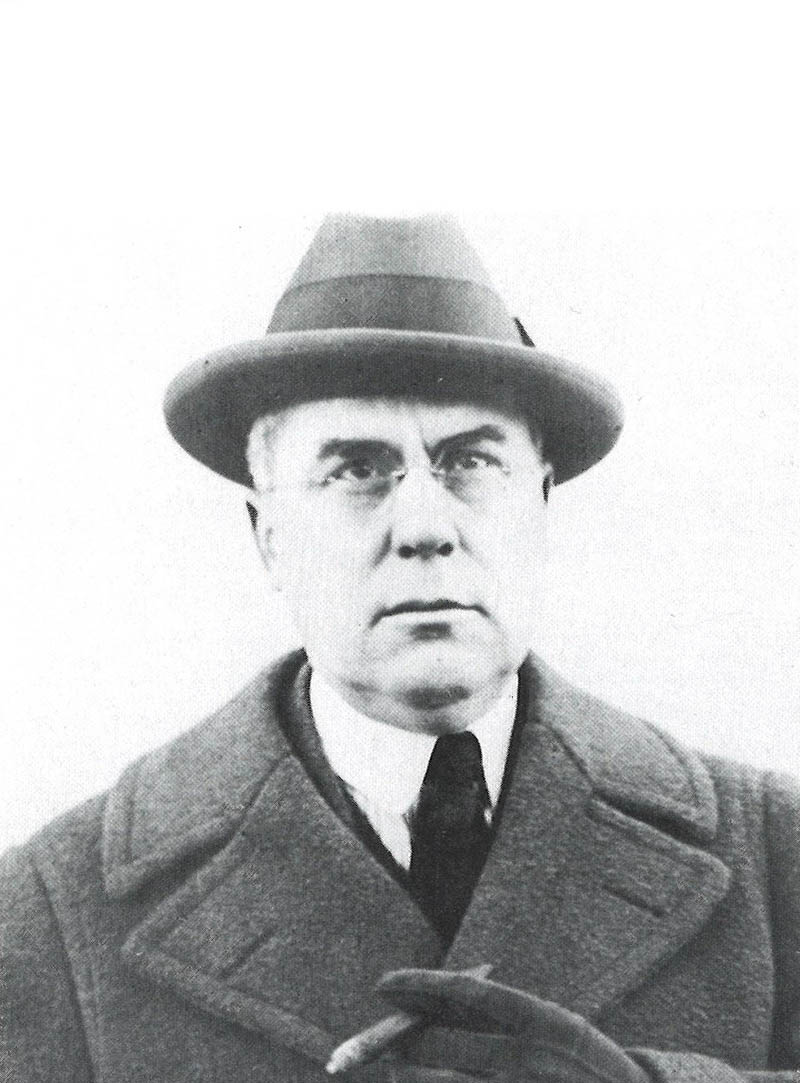
The American art collector and museum founder Albert C. Barnes was in Paris in the winter of 1922–23 looking for paintings for his collection of European Impressionism. Whether he saw the portrait of the pastry maker by chance in a café in Montparnasse or if it was his agent, the art dealer Paul Guillaume, who made him aware of it can no longer be reconstructed. In any case, Barnes bought the painting along with 51 other works by the artist from Léopold Zborowski’s gallery. Paul Guillaume made sure that the news spread quickly in his magazine Les Arts à Paris. As a result, Soutine began selling his works, and the prices for his paintings rose. Once again, Paris became the place where the story of an artist’s sudden discovery and instant prosperity unfolded.
Soutine, who was almost 30 years old at the time, was finally able to fundamentally change his lifestyle. However, he was not set for life. Especially during the financial crisis of the 1930s and during World War II, Soutine again needed the support of friends and patrons like Madeleine and Marcellin Castaing.
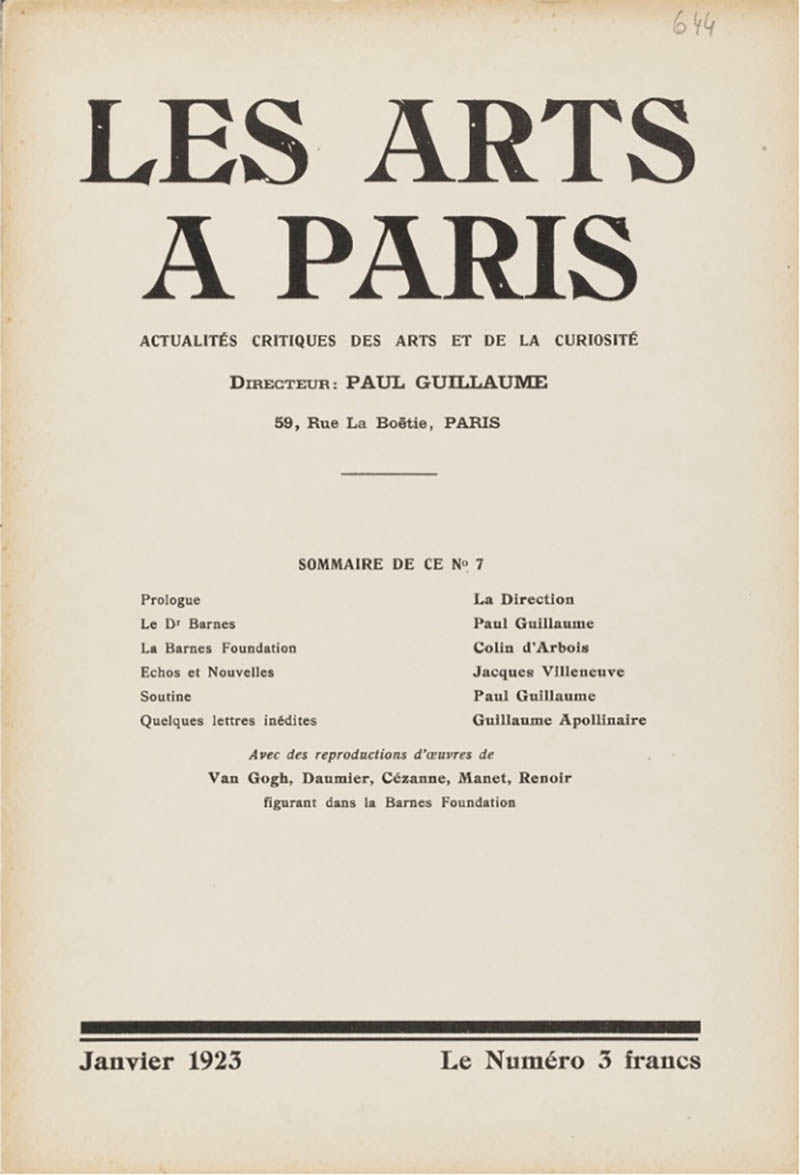
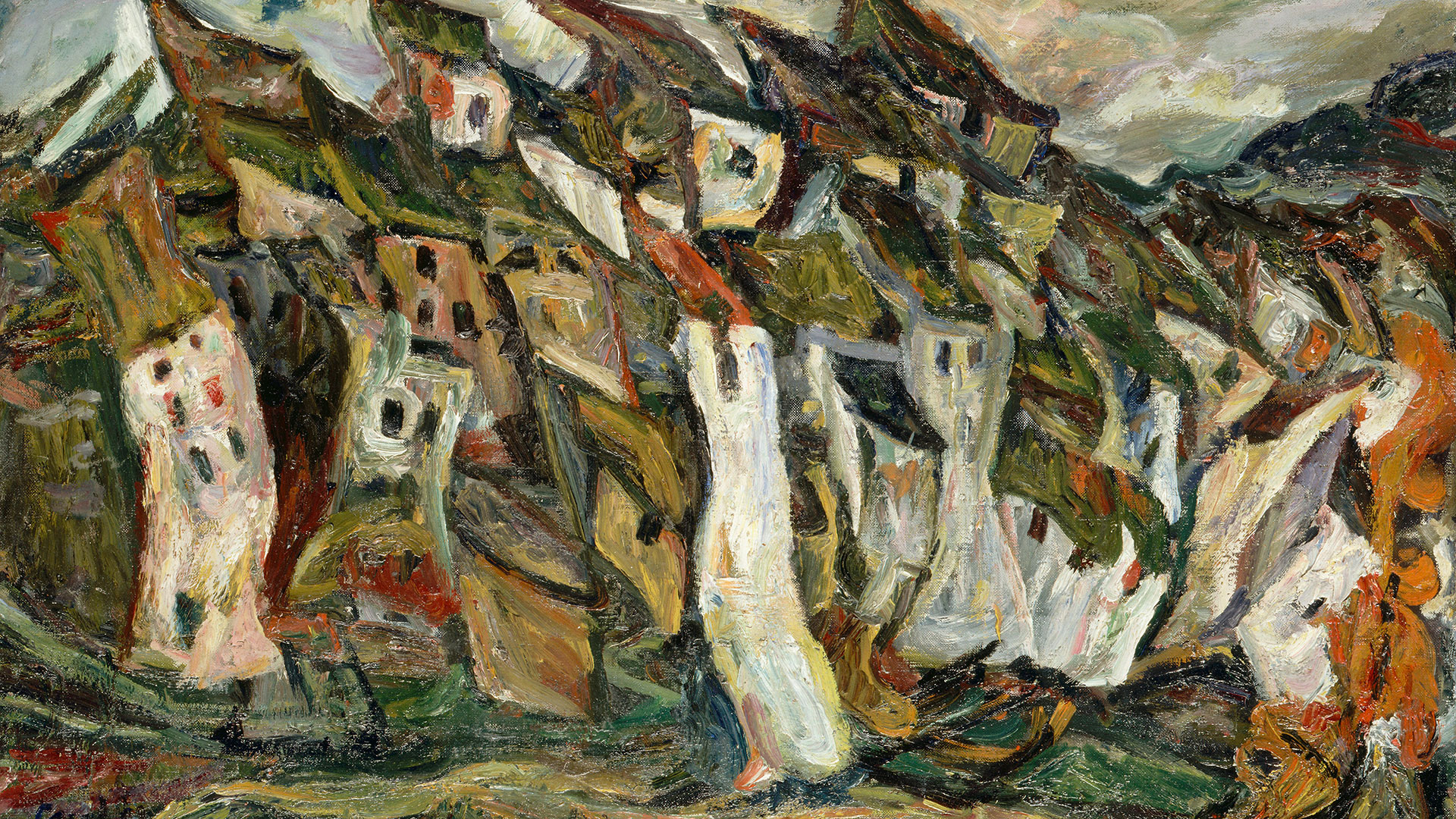
The huge recognition of Soutine’s artistic work and the financial independence he had earned from Albert Barnes’s purchases of his works were clearly good for the artist. Some people soon became envious of his success, however.
Several established French artists who feared for their own success and influence turned against the many foreign artists who were becoming well-known and relied on local institutions. The press supported their arguments, which were characterized by nationalist and anti-Semitic sentiments.
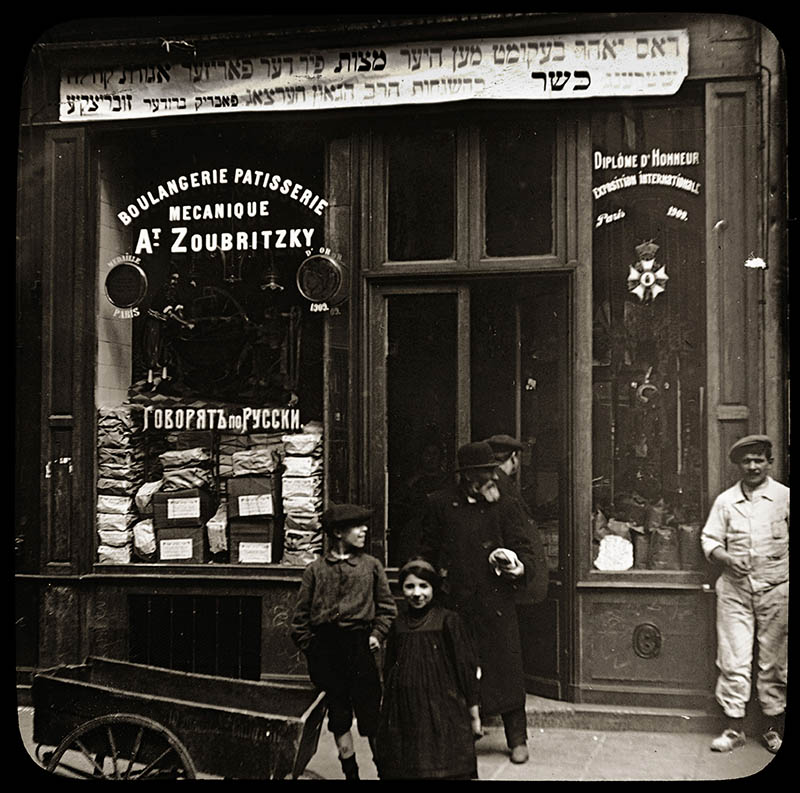
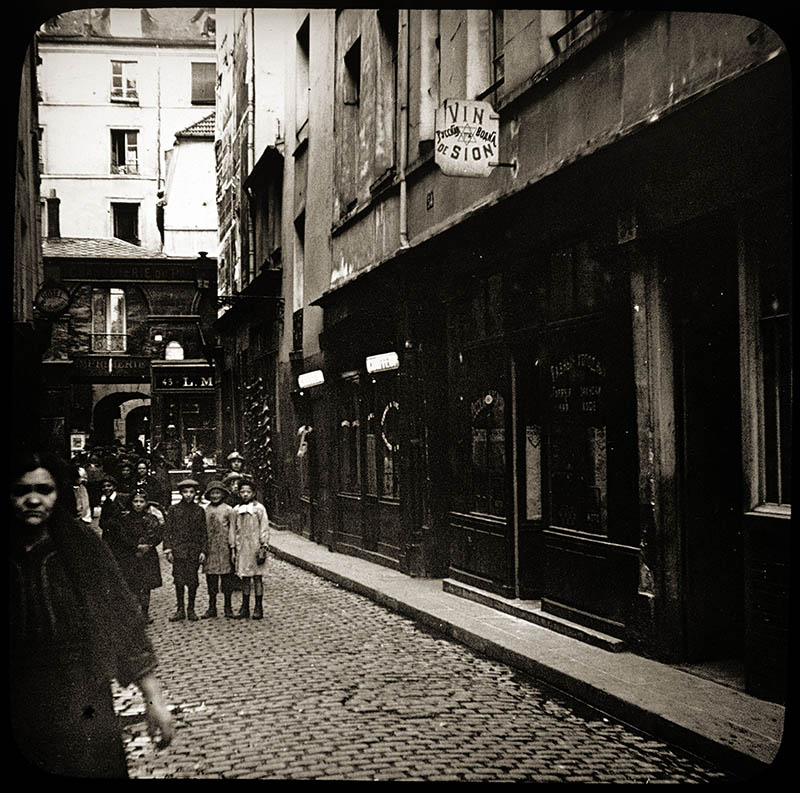
When Soutine came to Paris in 1913, he met many other Jewish artists from all over the world, also from Eastern Europe. Marc Chagall, Henri Epstein, Léon Indenbaum, Michel Kikoïne, Moise Kisling, Pinchus Krémègne, Jacques Lipchitz, Jules Pascin, Ossip Zadkine, and many more artists lived and worked there. Roughly 100,000 Jews from Czarist Russia settled in France between 1880 and 1925. They did so because of the wide-spread anti-Semitism and discrimination in Czarist Russia, among other reasons. Jews had regarded France as a hospitable country since the French Revolution, because it offered them access to all areas of political, economic, and cultural life. Soutine associated Paris with such ideas as emancipation, artistic growth, and inspiration. This seemed to come true for him, despite the envy and related hostilities he later experienced.
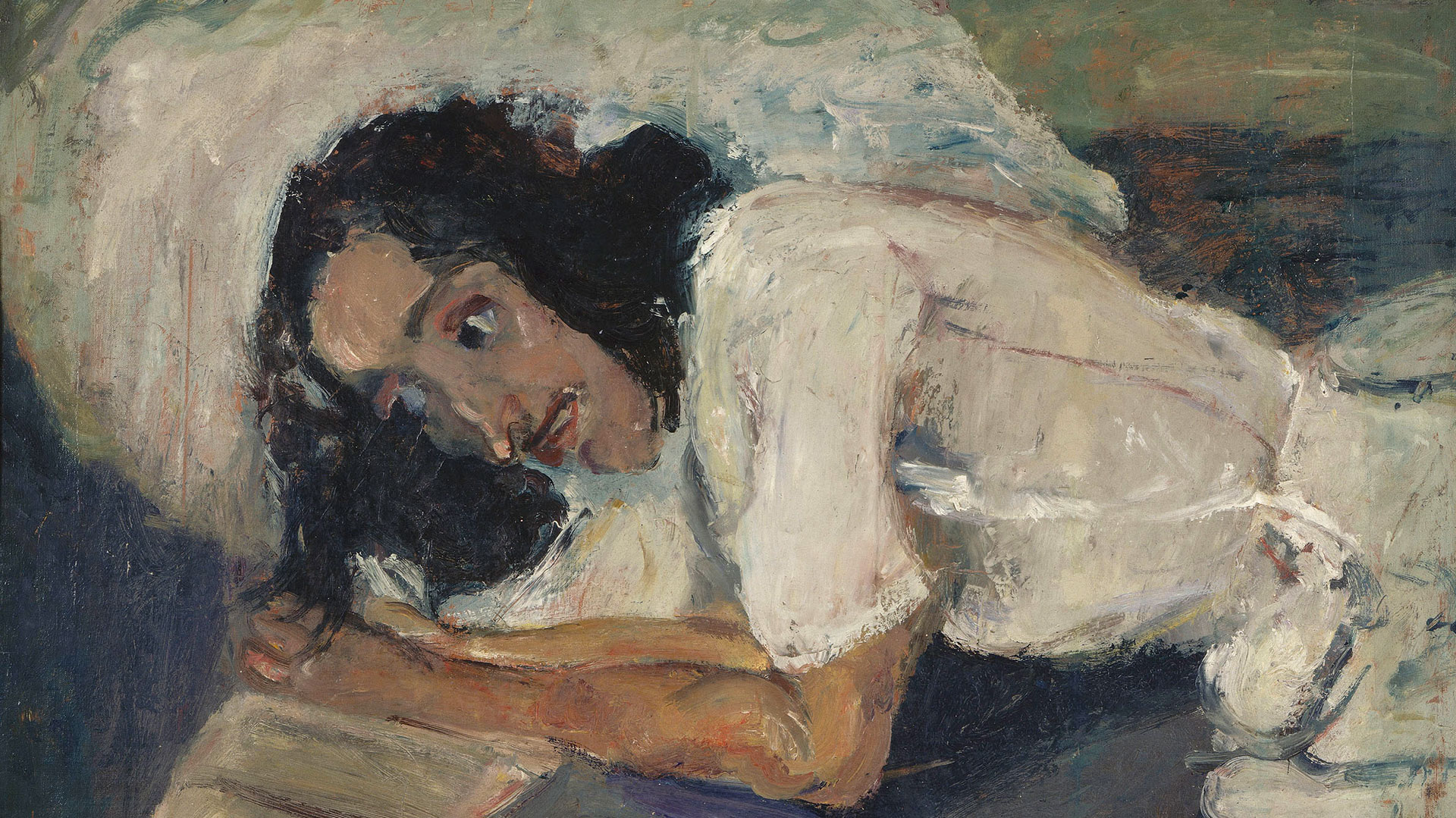
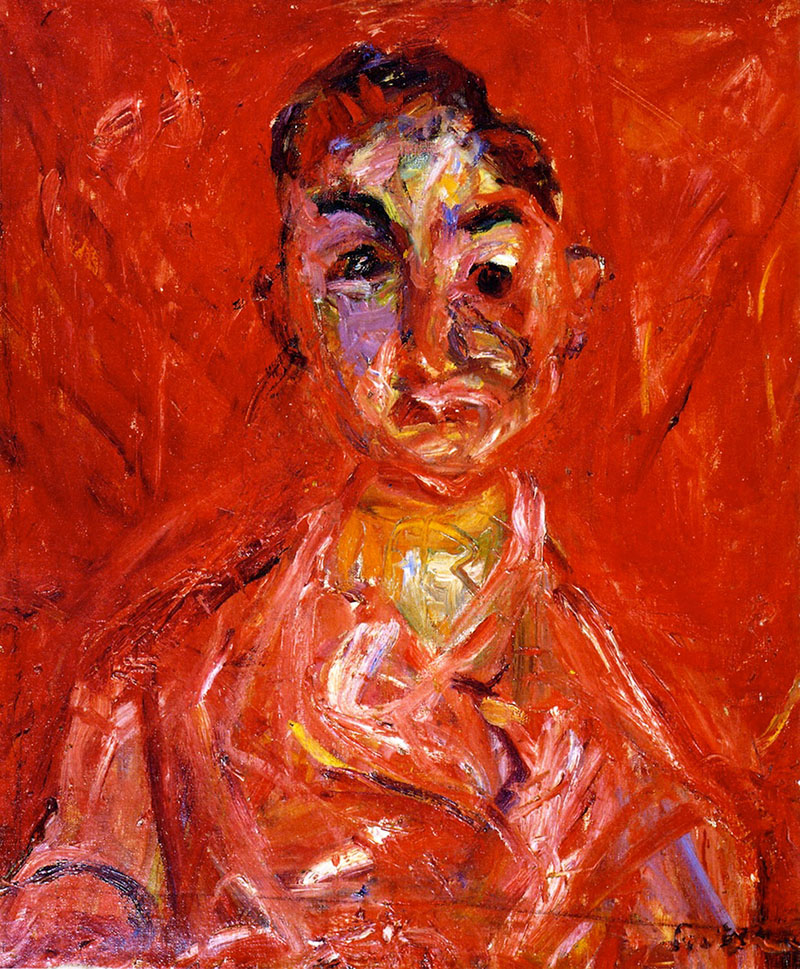
The artist Chaїm Soutine was admired by fellow painters while he was still alive. After World War II, his works became accessible to a wider audience in Europe and the US in group exhibitions as well as monographic shows. More than anything else, it was the retrospective at the Museum of Modern Art in New York in 1950 that helped a new generation of artists to discover Soutine’s work and to declare him a visionary and pioneer.
With their special subjects, his paintings evoke existential questions and are a testimony to his empathy. Artists who called for the keen observation of reality and who were searching for a new realism were encouraged by Soutine’s works. Alice Neel admired how he empathized with the types of people he portrayed, and she pursued similar goals in her own paintings.
In his large compositions, Francis Bacon juxtaposed human figures with slaughtered cows in a reference to both Rembrandt van Rijn and Soutine. He did this with the goal of creating an association between the strong bodies of the human figures and the drama of the skinned animals, while depicting their struggle through his fierce painting style of the opened bodies.
Willem de Kooning recognized his own painting practice in Soutine’s application of paint and felt like his colleague’s corporeal relationship with the motif, canvas, and colors spoke to him.
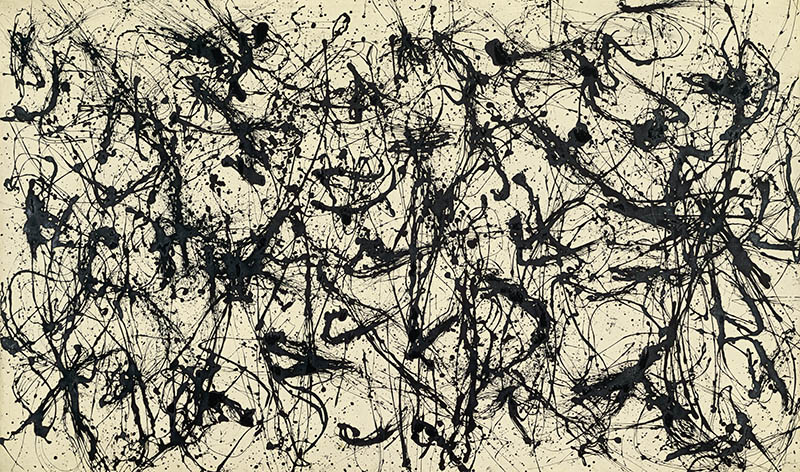
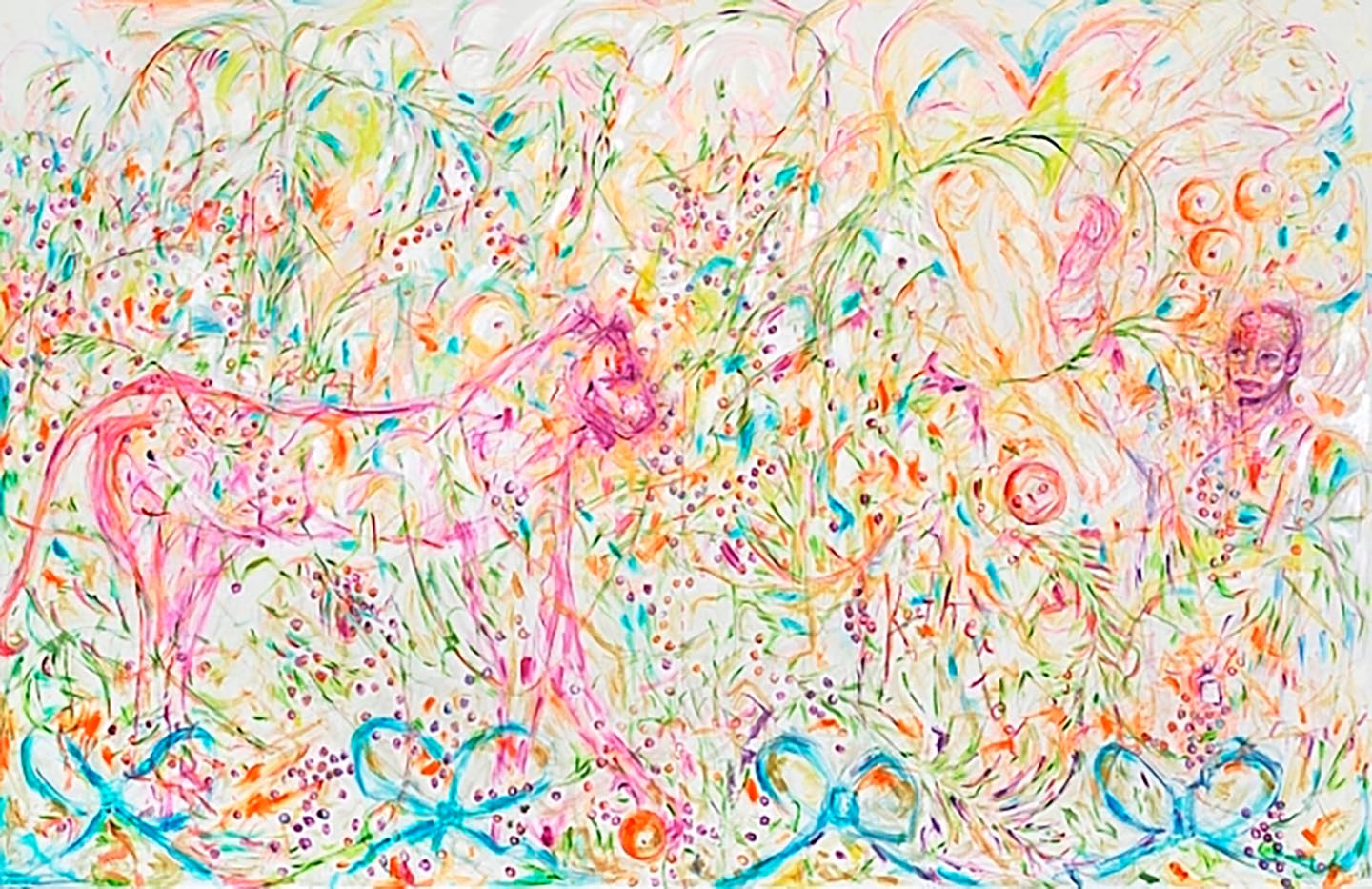
Soutine’s dynamic outlines are the result of a passionate painting process and are interpreted as a record of the painter’s inner emotions and outer movements.
These outlines occupied and encouraged several generations of artists who belonged to Art Informel and Abstract Expressionism. They regarded the abstract traces of the paint and the brush as seismographic readings of the pure movement of the painter’s hands.
The Exhibition
Kunstsammlung Nordrhein-Westfalen has assembled around 60 of Chaїm Soutine’s works in an impressive overview of his artistic development. This selection sheds light on how his expressive pictorial language took shape in his early works and concentrates on several series of pictures that were created between 1918 and 1928—the time of a new beginning after World War I.
Seen as a whole, the motifs reflect the misery and triumph of a painter who suffered under the historical and political circumstances and events. The subjects of his paintings are existential allegories, while his painting style shows his intensive exploration of the people and things around him. It also reveals the possibilities and the entire wealth of painting. The surface of each of Chaїm Soutine’s works is a dramatic celebration.

About the speaker
As an actor and director, André Kaczmarczyk (*1986) inspires both theater and film audiences and is now lending his voice to the audio guide for the Chaïm Soutine exhibition in K20. He studied at the Ernst Busch Academy of Dramatic Arts in Berlin and has been a member of the ensemble at the Düsseldorfer Schauspielhaus since 2016.
Since 2021, he has been investigating as the first gender-fluid chief inspector, Vincent Ross, on "Polizeiruf 110".
Audible in German, English and simple language (D).
